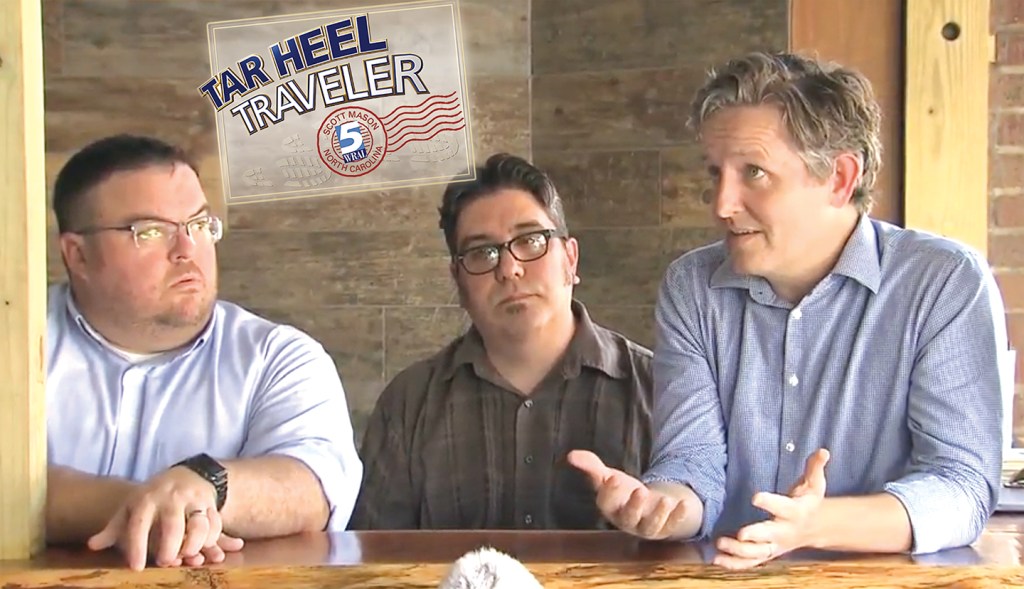By Richard Sullins | richard@rantnc.com
The Lee County Board of Commissioners gave preliminary approval Monday night to a surprise redistricting proposal that had not been previously viewed or commented on by the public.
The 4-3 vote to move forward with a Plan F – presented publicly for the first time on Monday, after commissioners had already held a public hearing for two other plans which had been visible for weeks on the county’s website – followed party lines, with the Board’s Republican majority in support, and Democrats opposed. The move redefines the county’s electoral map for the next ten years, although a final vote is set for later in the month.
Commissioners found Plan F on their seats and flashed onto a screen for presentation as Monday’s meeting began. It later was published on the county’s website.
City and County GIS Strategic Services Director Don Kovasckitz said Plan F was produced during the final days of September with the approval of County Manager John Crumpton and at the request of Republican Commissioner Dr. Andre Knecht. It was said to be like Plan A, with some shifting of voters from District 4 into District 2 and another 647 voters from District 2 into District 1.
Democratic Commissioner Cameron Sharpe asked Kovasckitz about the difference between Plan E, which had been produced just before the September 20 meeting, and the new Plan F. Kovasckitz responded, “the direction that we were given was to bring the population as close to a zero deviation. Plan F was at the direction of Dr. Knecht.”
“It just kind of feels like to me that there is a man behind the curtain somewhere,” Sharpe said of the majority’s frequent changes to the maps.
Democratic Commissioner Robert Reives Sr. offered a motion to adopt Plan A, the version that is closest in appearance to the current district map. Without any discussion, the motion moved quickly to a vote, which failed along partisan lines.
As the discussion returned to Plan F, Kovasckitz reminded commissioners of the criteria used to draw the maps.
“First was population. Second was keeping our incumbents in their districts. The third was keeping the districts as compact as we could. And fourth was following Section 2 of the Voting Rights Act, that we would do nothing to impede or hinder the rights of those minorities,” he said.
Kovasckitz went on to say that “we were advised by our consulting attorneys not to look at voter or partisan data. And we did not.”
Republican Commissioner Bill Carver asked several questions in September about the legality of drawing maps using voter registration or turnout data, but County Attorney Whitney Parrish said that there is a body of case law prohibiting the drawing of districts using anything except population.
Reives objected to moving the 647 voters from District 2 into his district, saying that they were likely Republican voters and that pulling population from such an area would impact his district in a negative way. But he did offer a compromise to Knecht, saying that he would accept half of that amount and vote for Plan F if Knecht would agree. Knecht didn’t directly address Reives’ offer in his response.
Ultimately, Republican Commissioner and Vice Chair Arianna Lavallee offered a motion to move forward with Plan F and have the legal staff draft a resolution providing a street-by-street description of the boundaries in a manner similar to the way a property deed defines lines on a parcel of land. The Democrats on the Board tried a final time to bring a vote on Reives’ proposal for moving roughly 325 voters from District 2 into District 1, but Republican Chairman Kirk Smith called for a vote on the motion made by Lavallee, which passed 4-3.
But the final vote didn’t bring an end to the discussion. During the member comment period at the conclusion of the meeting, Sharpe came back to the subject to express his disappointment in the way the process ended.
“The people were allowed to look at maps A through E online, but not allowing them to see F shows a lack of transparency in the process,” he said.
Reives’ feelings of resignation could be heard in his voice in the meeting’s final moments as he said, “I continue to be humbled by the amount of attention that District 1 seems to draw every 10 years.”
Redistricting is necessary every 10 years because of population shifts that are detected when the U.S. Census is taken. The principle of equal representation in each county district means that the districts must be as balanced as possible in terms of the number of persons living within it in order to maintain the principle of one person, one vote.
The county has had a majority-minority district since passage of the Voting Rights Act in 1965, meaning that the district has a majority of citizens who are members of minority groups. In 2013, the US Supreme Court ruled that provision of the Act unconstitutional but affirmed that states are still bound by its remaining requirements that prohibit voting practices or procedures that discriminate on the basis of race, color, or a minority group language.
The commissioners take up the issue a final time on October 18 when it will adopt the final resolution to establish the written boundaries of the four voting districts.





















